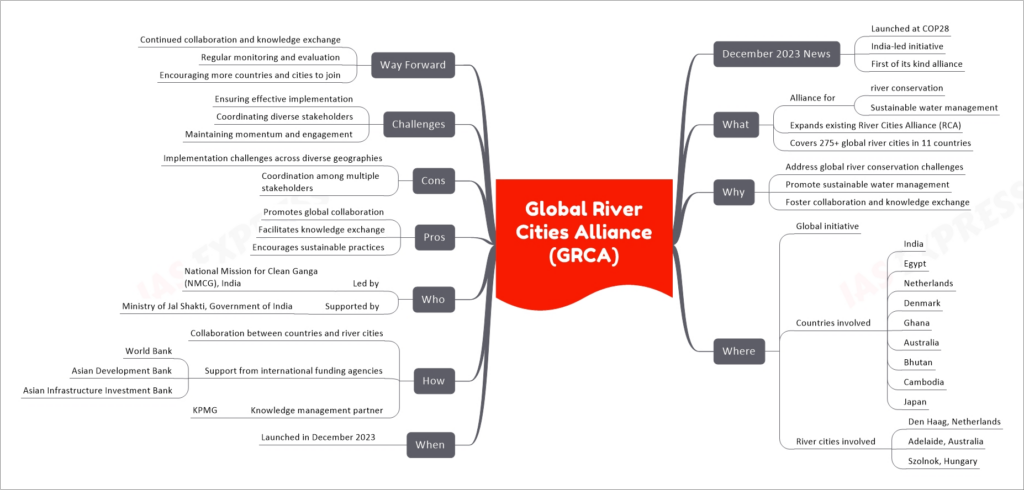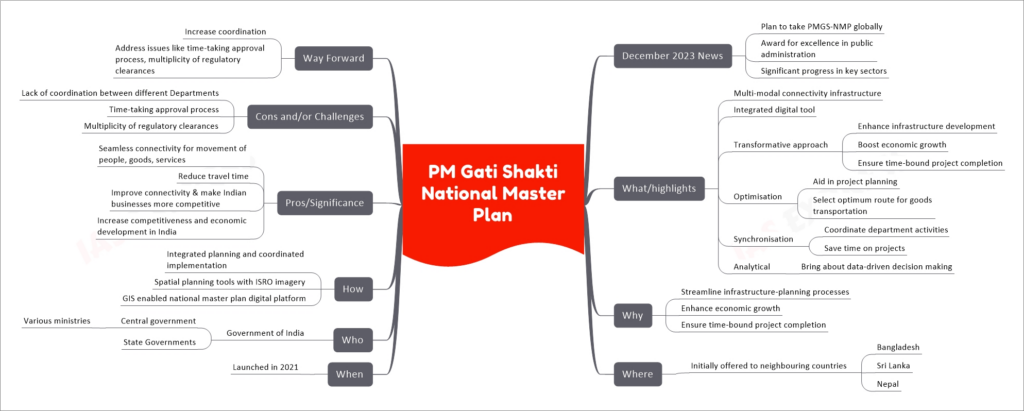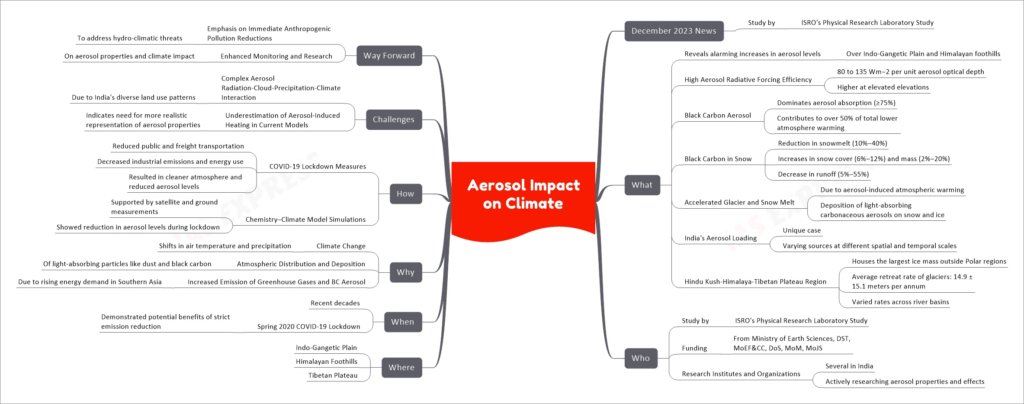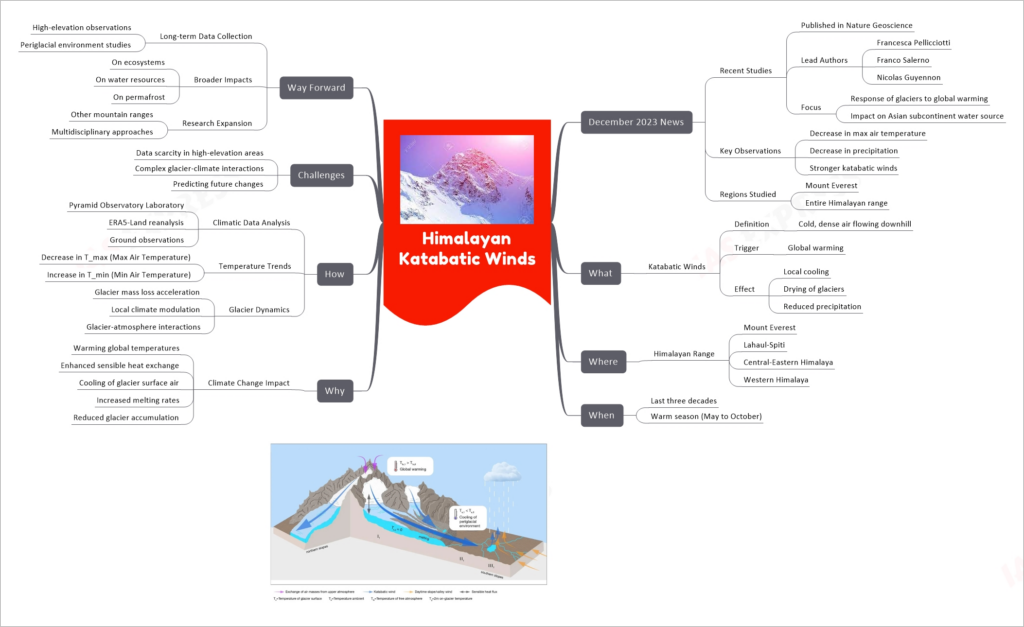[Newsbits] 13+14.12.2023 – Himalayan Katabatic Winds, Global River Cities Alliance, PM Gati Shakti, & more

The Global River Cities Alliance (GRCA) is a first-of-its-kind initiative launched in December 2023 at COP28. Led by India’s National Mission for Clean Ganga (NMCG), the GRCA is a global alliance that brings together 275+ river cities across 11 countries, including India, Egypt, Netherlands, Denmark, Ghana, Australia, Bhutan, Cambodia, and Japan. The GRCA aims to address global river conservation challenges and promote sustainable water management through collaboration and knowledge exchange. Despite potential implementation challenges across diverse geographies and coordination among multiple stakeholders, the GRCA represents a significant step forward in global efforts towards river conservation and sustainable water management. The Emissions Divide Report, published by the Council on Energy, Environment, and Water (CEEW) in 2023, highlights stark inequalities in CO2 emissions among income classes, both within and across nations. The report examines a diverse range of developed and developing economies, accounting for approximately 81% of global emissions, 86% of the world’s GDP, and 66% of the global population. The analysis relies on per capita CO2 emissions data for various income groups from the World Inequality Database (WID), and income deciles from the Poverty and Inequality Platform, World Bank. The study focuses on the stark inequities in consumption-driven emissions, especially among the affluent in developed countries, and estimates the potential carbon budget savings achievable through the adoption of low-carbon lifestyles by top emitters. The PM Gati Shakti National Master Plan (PMGS-NMP) is a transformative initiative launched by the Government of India in 2021. It aims to provide multi-modal connectivity infrastructure to various economic zones, enhancing infrastructure development and boosting economic growth. The plan is designed to ensure the completion of projects in a time-bound manner. It uses an integrated digital tool to streamline infrastructure-planning processes. The plan is initially being offered to neighbouring countries like Bangladesh, Sri Lanka, and Nepal. The PMGS-NMP brings about data-driven decision making, aids in project planning, and selects the optimum route for goods transportation. It also coordinates department activities and saves time on projects. The plan is expected to provide seamless connectivity for the movement of people, goods, and services, reduce travel time, and improve connectivity to make Indian businesses more competitive. However, it faces challenges such as a lack of coordination between different departments, a time-consuming approval process, and multiplicity of regulatory clearances. The way forward includes increasing coordination and addressing these issues. Scientists from the Department of Atomic Energy and IDRS Labs Pvt. Ltd. Bengaluru have developed AKTOCYTE tablets, designed as an adjuvant to cancer radiotherapy, regenerative nutraceutical, immunomodulator, and antioxidant. The primary aim of this collaboration is to minimize the side effects of radiotherapy, particularly in pelvic cancer patients suffering from radiotherapy-induced Cystitis. The tablets have shown remarkable results, eliminating the need for surgical removal of the urinary bladder. The tablets are expected to hit the market in January 2024. Aerosols significantly impact the climate in the Himalayan region, as recent studies have shown. Increased aerosol levels, particularly black carbon, have contributed to heightened atmospheric warming and accelerated melting of glaciers and snow. This phenomenon is exacerbated by the unique aerosol loading in India, influenced by diverse sources and land use patterns. The COVID-19 lockdown in 2020 offered insights into the potential benefits of emission reductions, as cleaner atmospheric conditions led to decreased snowmelt and increased snow cover. The Himalayan Katabatic Winds, as studied in December 2023, refer to a phenomenon where rising global temperatures cause Himalayan glaciers to cool the air in contact with their surfaces, leading to the flow of cold, dense katabatic winds downhill. This process is a response to climate change, marked by a decrease in maximum air temperatures and precipitation in the region. Researchers have utilized climatic data from Mount Everest and other parts of the Himalayas to understand these dynamics. Their findings highlight challenges such as data scarcity and complex glacier-climate interactions. Looking forward, they emphasize the need for long-term data collection and multidisciplinary research to assess broader impacts on ecosystems, water resources, and permafrost.
If you like this post, please share your feedback in the comments section below so that we will upload more posts like this.






